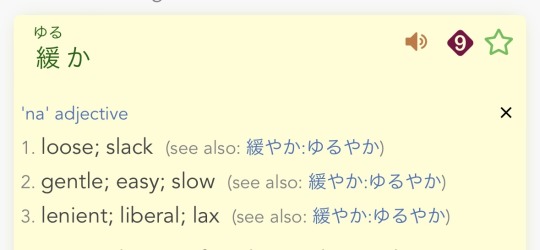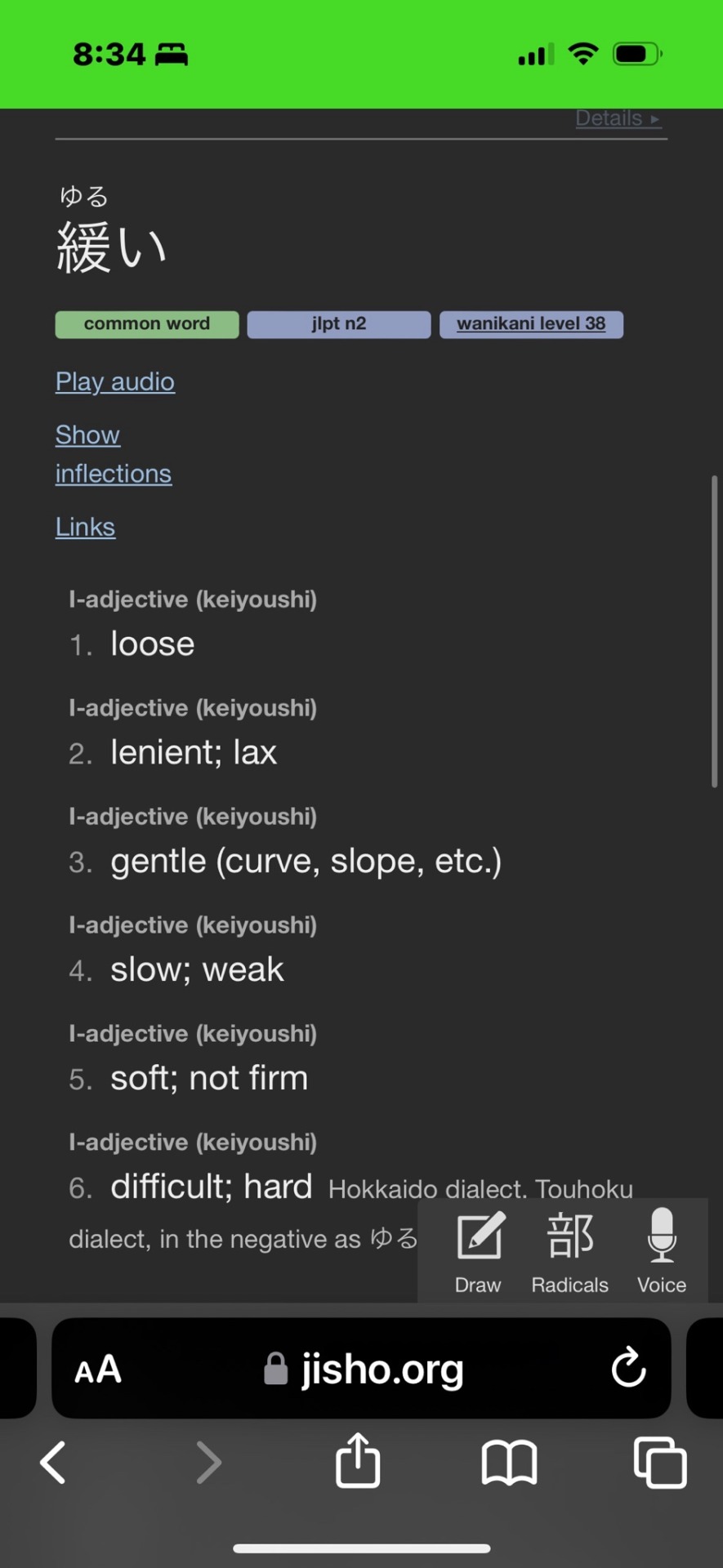#sequential timer
Explore tagged Tumblr posts
Text
Here we go, the first proper chapter of the Saiki K manga, 1-1!

Manga Saiki my beloved. How I missed you. I won’t comment on every single panel because I don’t want to spend —that— long talking about trivial things in this manga. But I’ll do my best to be annoyingly thorough in this re-read. Since I figure it will probably be my last proper re-read from end to end, sequentially. (Because quite frankly this manga is long. And I have other things to do. Hopefully.)

I’m not sure “lax” is the word I would use here? But I don’t like the anime’s use of “airheaded” much either, so?? “Considerably low key” maybe? In any case, the next panel sums it up “They both were the type not to think that deeply about things.” Let’s see… it says かなり緩かった. That seems to be about right, translation wise.


incheresting.
Also, it implies hypothetical strict parents of psychics exist, which… ironically enough, simply doesn’t exist in the Saikiverse. Come on Asou sensei. Give us an official continuation so we can meet some new psychic kid who meets this requirement of having grown up with strict parents.
I love how the very first page shows Saiki committing some selfless act with his powers. And yet he still gives us the spiel about how much psychic powers suck with his signature chronic >:(. Yes; Saiki has been a tsundere since the very beginning.
Saiki’s tsundere-ism aside, I have always liked how Asou sensei explains how psychic powers might be a significant drawback as much as a strength. The metaphor of a domestic dog who is fed and therefore doesn’t have the skill to hunt for itself, and the spoiled child who is given everything and thus robbed of agency, are both particularly good ones. (The curry and spoons one just makes me think of Mob psycho. Do you think One sensei read Saiki k???)

Saiki just lists all of his powers here. That certainly saves time. Though people who have already read the oneshots have the advantage of knowing exactly how these powers work (if we assume them properly canon.) There’s details about Saiki’s powers that get changed from the oneshots to the manga proper, like the timer on his spirit-body separation ability and his “clairvoyance” being called x-ray vision. Wait, no, that was the oneshot. Well, my point still stands.

I also like this part about a sense of achievement being impossible for him, since everything is too easy. It’s rather depressing if you think about it too much. Saiki definitely doesn’t belong in the “normal” life role that he forces himself into. But given his alternatives (Allow himself to become a government lab rat and subject himself to experimentation? Become a worldwide celebrity who fixes the problems of the world and maintains peace, essentially becoming a human god?? hang out with his amoral genius older brother who hates him???) his attempts at normalcy are understandable. And very entertaining.

No extreme emotions… I hope Asou sensei knew the can of worms he was opening by having Saiki say this. But I’m guessing he didn’t.
And the first of Kusuo’s problems in his titular disastrous life is the very normal problem of having to unlock the door for his father, who locked himself out of the house. But at this point, we the readers have no idea the extent of his powers and just how much his full potential is underutilized.
why doesn’t Kurumi have a job..? their mortgage is probably expensive and her son is an older teenager and fully capable of taking care of himself… i guess she just wants to be the doting mom for her son.

Ah!? Is that where Saiki gets his standards for how he uses his powers? Makes sense.
Sigh. watching your parents wrestle while waxing eloquent about coffee jelly. Never change Saiki. (and he never does.) He is really making me crave coffee jelly.

so cute.

XD his father’s thoughts are so ~kawaii~. Teehee.

Also, I never see anyone use forced telepathy in fics! More stuff that has so much damn potential… note to future me reading this.


The word used here in the manga is “psi user.” Let’s see… In Japanese, it is 超能力者(chyounouryokusha). Exactly what I expected; the same term as used on the cover. And that’s the word he uses in the anime, too, but in the subtitles, it’s translated as simply “psychic.” For those wondering, he says: 見せてやろう…超能力者の力おな… ‼︎ I am too low level to properly translate this, but I��d say it’s something like, “I’ll show you… a psi user’s power!”
Our translators: “I shall show you… the power of a psi user…!” (and they keep the punctuation and spacing used in the original Japanese.)

:,) He smiles… I love it when he smiles with the sparklies and the shine comes into his eyes. He doesn’t make this expression but a few meager times in the comic. And one of them is at the very end.

Papa also has a temper?? Ugh. He’s such a spoiled child. I can’t blame Kusuo for being a brat when his dad is like that.
And then Kusuo immediately smashes every window in the house using his psi powers out of coffee jelly induced jealousy. Another turn of events that just doesn’t make sense in the anime!!!
The translator note at the end is very sweet. I feel lucky that such a good scan team took on Saiki k; they really put effort into it, even the untranslatable stuff.
Alrighty, (wii fit meditation announcer guy voice) that’s… the end. It took me the better part of four hours to read and touch type all of this on my smartphone. Time well spent. (though I really should have used my computer. No, actually I’d better not, or all of my posts are going to be the length of 0-6…)
end of 1-1💫
#read-saiki#read-saiki 1-1#for those of you wondering#I started learning Japanese for the express purpose of being able to read the Saiki k manga… there is no other reason.#My love for this series is very large indeed. 私の斎木楠雄の災難への愛は素晴らしいです。
39 notes
·
View notes
Text
Biotronix DVT Lymphedema Device 4 Chamber Digital with 2 Leg Sleeves ,1 Waist ,1 Arm Sleeve
Clinical Use 6 Modes 4 Chambers Touch Panel DVT Treatment Portable Lymphatic Drainage Light Weight Digital Display For Legs Arm and Waist Pneumatic 4 Chamber Lymphedema Lymphatic Drainage with Timer Light Weigh
Biotronix Solution Forever® Pneumatic compression using air pressure Pump Therapy for DVTs Digital with 2 legs, 1 waist, and 1 arm attachment (sleeves). There are four chambers. Pump System for DVT Sequential pneumatic compression therapy that can be controlled remotely Using leg extensions. (Can be utilized if the patient's leg size exceeds the standard sleeve size.) Biotronix Solution for Lifetime Sports Recovery Pneumatic Air Compression Device Characteristics Six different massage modes contribute to the therapeutic impact. For optimal comfort, adjustable pressure settings ranging from 30-250 mmHg may be chosen. There are six different modes (A, B, C, D, E, and F) where skip care and intensive care features can be selected separately. Timer settings include 10, 20, 30, 40, 50, and 60 minutes.
DVT Lymphedema Device, 4 Chamber Lymphedema Pump, Digital DVT Compression Device, Lymphedema Compression Therapy, DVT Prevention Device, 4 Chamber Digital Compression Pump, Lymphedema Therapy Machine, Digital Compression Therapy Device, DVT and Lymphedema Treatment Device, Digital Lymphedema Compression Pump, Multi-Chamber DVT Device, Compression Pump for Lymphedema, Digital Compression Therapy for DVT, Lymphedema Massage Pump.
Contact us / What's app - 9711991264,9015251243,8076205625 ,8076549111 Website : www.solutionforever.com www.linktr.ee/biotronixcareinternational EMAIL : [email protected] ADDRESS : F-400, Sudershan Park ,Moti Nagar ,Near Gopal ji Dairy ,ND-110015 Location : Biotronix Care 097119 91264
#physiotherapy#dvtpump#dvttherapy#Physiotherapist#physio#rehabilitation#rehab#health#varicosevein#edema#lymphedema
0 notes
Text
Top 10 Must-Have ICs for Your Next Electronics Project
Integrated Circuits (ICs) have revolutionized electronics, making complex circuitry compact, affordable, and more reliable. Whether you’re working on a hobby project or designing a professional application, certain ICs are essential for building efficient and functional devices. Here, we’ll go over ten must-have ICs that can elevate your next electronics project.
1. 555 Timer IC
The 555 Timer is a versatile IC known for its wide range of applications, from timing to pulse generation. It’s used in both monostable (one-shot) and astable (continuous) modes, ideal for creating oscillators, timers, and even light flashers. It’s a staple for DIY electronics projects and is compatible with numerous applications.
2. LM317 Voltage Regulator
The LM317 is an adjustable voltage regulator IC that provides a stable output. This IC can regulate voltages from 1.25V to 37V, making it essential for power management in electronic circuits. Ideal for custom voltage needs, it’s useful in battery charging circuits, power supplies, and adjustable voltage systems.
3. ATmega328 Microcontroller
This microcontroller IC powers Arduino boards, making it a favorite among hobbyists and professionals alike. It’s programmable with various I/O pins, analog-to-digital converters, and PWM capabilities, perfect for projects that involve data processing, motor control, or IoT applications.
4. Operational Amplifier (Op-Amp) IC: LM741
The LM741 Op-Amp IC is a general-purpose operational amplifier widely used in analog electronics. It amplifies weak signals and is commonly employed in sensors, audio applications, and signal processing. With a wide frequency response and minimal distortion, it’s an essential IC for audio and measurement circuits.
5. 4017 Decade Counter IC
The 4017 Decade Counter is a popular IC in applications where sequential LED lighting or timing control is required. It’s often used in combination with the 555 Timer to create light chasers or display counters. This IC finds applications in counters, timers, and LED displays.
6. ULN2003A Darlington Transistor Array
For projects involving motors, relays, or high-current components, the ULN2003A is invaluable. This Darlington transistor array provides the necessary current amplification to control multiple loads from a single microcontroller or sensor. It’s often used in stepper motor drivers and relay control applications.
7. NE5532 Audio Amplifier
The NE5532 is an audio amplifier IC with excellent noise performance, making it ideal for high-fidelity audio applications. Its low distortion and wide frequency response suit it well for audio mixing, preamplifiers, and general sound processing tasks. Audio engineers and hobbyists alike rely on this IC for quality sound amplification.
8. LM3915 Dot/Bar Display Driver
If you’re creating visual indicators, the LM3915 is a great choice. This IC is used to drive LED bar graphs or dot displays, making it a favorite for visual VU (Volume Unit) meters or battery level indicators. With its easy cascading options, it’s well-suited for applications needing multiple LED levels.
9. MAX232 Serial Communication IC
The MAX232 is crucial for projects involving RS-232 communication. It converts signals from a serial port to signals suitable for TTL-based digital logic circuits. This IC is essential for any project requiring serial communication, like microcontroller-based systems or data transfer applications.
10. ESP8266 Wi-Fi Module
For IoT projects, the ESP8266 Wi-Fi Module IC is a game-changer. This IC provides Wi-Fi capabilities to microcontroller-based projects, allowing remote control and data monitoring. It’s widely used in smart home applications, sensor networks, and any project that requires wireless data transfer.
Conclusion
These essential ICs provide versatility, reliability, and functionality, which makes them indispensable in electronic projects. Whether you’re building a simple timer, creating complex IoT devices, or designing audio applications, these ICs are vital tools. Stocking up on these components will ensure your toolbox is ready for almost any project that comes your way.
If you’re looking to get started with these ICs, you can find a wide selection and Buy Electronic Components Online from Blizzcartz. For more details and the best prices, check out Electronic Components Online in India.
#Buy Electronic Components Online#Best Prices for Electronic Components in India#Electronic Components for DIY Projects
0 notes
Text
Power Point
What is PowerPoint?
Microsoft PowerPoint is a presentation software that forms part of the Microsoft Office suite. It is widely used for creating slide-based presentations, combining text, graphics, multimedia elements, and animations. PowerPoint is a versatile tool employed in various settings—business meetings, academic lectures, professional conferences, and even personal events such as weddings or social gatherings. Its ease of use and rich features have made it the go-to software for sharing information visually and interactively.
History and Development
PowerPoint was originally developed by a company called Forethought, Inc., in 1987 and was initially released for Apple Macintosh computers. Microsoft quickly recognized its potential and acquired Forethought, rebranding the software as Microsoft PowerPoint. Since then, it has become a crucial part of Microsoft Office and continues to evolve with frequent updates, making it compatible with the latest technologies.
Features of PowerPoint
Slides and Layouts: PowerPoint presentations are built on slides, which act as individual units for organizing content. Users can select from a variety of layouts that include combinations of text placeholders, images, charts, and media. This slide-based approach makes it easy to structure a presentation in a logical, sequential manner.
Themes and Templates: PowerPoint offers built-in themes and templates that allow users to apply consistent design elements, such as colors, fonts, and backgrounds, across all slides. These templates save time by providing pre-designed layouts that can be easily customized.
Multimedia Integration: Users can incorporate images, audio files, videos, charts, and animations into their presentations. This multimedia flexibility helps engage audiences, making complex topics more accessible and interesting.
Transitions and Animations: PowerPoint allows users to add animations to individual elements on a slide and transitions between slides to enhance visual appeal. These effects can make the presentation more dynamic, guiding the audience’s attention to important points.
Presenter Tools: The software includes features like Presenter View, which displays speaker notes, timers, and upcoming slides on a separate screen visible only to the presenter. This helps maintain the flow of the presentation while keeping the audience focused.
Collaboration Tools: PowerPoint supports collaborative features through Microsoft 365 (formerly Office 365). Multiple users can work on the same presentation simultaneously, whether on desktop or online versions, and track changes in real-time.
Compatibility with Other Software: PowerPoint presentations can integrate with other Microsoft Office applications such as Word and Excel. Charts and tables from Excel can be embedded directly into a presentation, while text from Word can be used to outline content.
Applications of PowerPoint
Business Presentations: PowerPoint is a cornerstone tool in the business world. It is used for pitching new ideas, conducting meetings, reporting quarterly results, and training employees. Sales teams often use PowerPoint decks to present product information to clients, and managers use it to visualize performance metrics.
Academic and Educational Settings: In schools and universities, PowerPoint is a common tool for delivering lectures. It allows instructors to present key points visually while engaging students with videos, images, and interactive questions. Students also use it to create project presentations and share their research.
Conferences and Public Speaking: PowerPoint is essential at conferences and professional events, where it helps speakers deliver structured presentations. The use of slides helps communicate ideas clearly, keeping the audience engaged with both visual and spoken content.
Personal Use: In addition to professional and academic environments, PowerPoint is used for personal purposes. People create slideshows for weddings, birthdays, and family events, sharing memories with photo montages, music, and videos.
Advantages of PowerPoint
Easy to Use: PowerPoint offers a user-friendly interface, with drag-and-drop functionality for adding elements to slides.
Highly Customizable: It allows extensive customization of text, design, and multimedia to fit different presentation needs.
Wide Compatibility: PowerPoint files can be saved in various formats (e.g., PDF, JPEG, MP4), making them easy to share and view across different platforms.
Engagement Tools: Features like animations, multimedia integration, and live polls help keep audiences engaged.
Accessibility Features: PowerPoint includes accessibility tools such as alt text for images and the option to add subtitles to presentations.
Limitations of PowerPoint
Over-reliance on Visuals: Some users may overuse visual effects, which can detract from the message being conveyed.
Linear Structure: While the slide-based format works well for structured content, it can be less effective for discussions that require non-linear navigation.
Risk of Monotony: Poor design choices, such as overly dense text or lack of variety in slides, can make presentations boring.
File Size: Complex presentations with many multimedia elements can become large, posing challenges for sharing and storage.
Conclusion
Microsoft PowerPoint is a powerful presentation tool that enables users to convey information in a visually compelling way. Its wide range of features—ranging from slide layouts and templates to multimedia integration and collaboration tools—makes it suitable for many scenarios. Despite some limitations, such as potential overuse of visual elements, PowerPoint remains a key software for anyone looking to deliver impactful presentations. Whether in business, education, or personal use, PowerPoint continues to be an indispensable tool for organizing and sharing ideas effectively.
0 notes
Text
How does logic work? CD4060 Binary CounterHow does logic work? CD4060 Binary Counter
In the previous post (How does binary logic work? Shift registers), we controlled the CD40194 shift register modes by applying logical ones and zeros, high and low voltage levels, to its two control inputs, S1 and S0.

To do this, we assembled a simple circuit of two synchronous JK flip-flops on the CD4027 chip, which sequentially divides the frequency in half. In other words, it counts pulses in the binary number system.
What is a JK trigger, you may ask? We are familiar with the D flip-flop. It is synchronous; it reads the input state and saves it as the output state at the edge of the clock pulse.
And the RS flip-flop is asynchronous: a one at the reset input sets its output to zero, and a one at the specified input sets its output to one. When both inputs are zero, the output state does not change.
The JK flip-flop is synchronous and is similar to the RS flip-flop. It reacts to the input states only at the edge of the clock pulse. A high level at input J sets the flip-flop output to one, at input K to zero. At both inputs, J and K, it reverses the trigger state, dividing the clock frequency in half. And if the logic levels at both inputs are low, then the output state does not change.
Each press of the button switches the circuit from the previous state to the next one: 00 → 01 → 10 → 11 → 00, and so on.
So, the resulting circuit counts pulses! If one converts binary numbers to the decimal system, one gets 0 → 1 → 2 → 3 → 0...
If we'd like to count from 0 (000) to 7 (111), we'll need a third flip-flop; to count from 0 (0000) to 15 (1111), four flip-flops will be required, and so on. One flip-flop corresponds to one binary digit.
Our circuit has four familiar D flip-flops of two CD4013 microchips forming a four-bit binary counter.

This counter is clocked not by pressing a button but by a pulse generator on the NE555 integrated timer.
youtube
Our third example will be two music boxes with lighting effects assembled according to the same circuit diagram. See how interesting this is! The algorithm for switching lights is the same. Still, you can take LEDs of different colors, place them in different ways, and get completely different effects!
The CD4060 binary counter chip is used here. The basis of its internal structure is a chain of 14 flip-flops forming a 14-bit counter. Pin outputs of the chip are not available for all the digits, only from the fourth to the tenth and from the twelfth to the fourteenth.

So, the CD4060 chip allows one to divide the frequency into 16, 32, 64, 128, 256, 512, 1024, 4096, 8192, and 16384. Huge numbers, right?
The CD4060 can be clocked from an external source via pin 11. But the chip also has a built-in clock generator. To enable it, just connect a capacitor and two resistors to pins 9, 10, and 11. This is exactly what is done in our diagram.

The oscillation period of the clock generator is set by a stage of capacitor C1, series-connected resistor R1, and potentiometer R3, allowing one to adjust the clock frequency and, subsequently, the speed of changing the lights.
The bases of transistors are connected to the outputs corresponding to frequency division by 32, 64, and 128, and these transistors toggle groups of LEDs. But should we connect the transistor's base directly to the microcircuit's logical output without a series resistor?
You should definitely avoid it if the transistor is connected to a circuit with a common emitter. Here, we have PNP transistors S9012 with the emitter circuit load. That means we have a circuit with a common collector. Such a circuit does not need a resistor to limit the base current of the transistor.
The LED groups will light up with a logical zero at the base of the transistor and turn off with a logical one.
The sequence of logical levels and lighting up groups of LEDs, numbered according to transistors Q1-Q3, is as follows: 000 → 001 → 010 → 011 → 100 → 101 → 110 → 000 321 → 32 → 31 → 3 → 21 → 2 → 1 → 321
Case 111, when none of the LEDs light up, is impossible in this circuit. More precisely, it happens so briefly that it's hard to notice.
Diodes D1–D3 and resistor R4 together form an OR logic element. As long as at least one of the outputs Q5, Q6, or Q7 is logic low, the reset input of the CD4060 chip is pulled to ground through one or more diodes.
As soon as the counter reaches logic ones on all three outputs we use, the diodes stop shunting the reset input, a high logic level appears on it, and the microcircuit resets all its flip-flops to a low level.
Then, a logical zero appears again at the reset input, and the counter restarts again.
We could've saved three diodes and a resistor by simply connecting Q8 to the reset input. Or just never use the reset input at all and let the counter tick from 0 to 32767 and then from zero again.
But then, after the sequence reaches phase 110 with just the group of LEDs connected to transistor Q1 lit, all the LEDs will go out until the counter reaches 1000, and if a reset occurs.
Our magic musical lantern won't be so beautiful working in such a way. Therefore, the developers added a 3OR gate with a resistor and three diodes.
The BJ1552 is a digital music chip in a transistor package, referred to as just a transistor in the diagram for simplicity's sake. A melody is saved in memory and played whenever the chip is powered on.
Transistor Q5, which serves as an audio amplifier, unlike Q1-Q3, is an NPN-type connected in a common-emitter circuit. A resistor is needed here to limit the base current, and it is built into the BJ1552 chip.

We have already encountered the CD4060 when assembling an electronic clock with a digital display. That circuit used the CD4060's ability to operate with a crystal frequency regulator.

In this case, a clock quartz is used; its resonant frequency is 32768 hertz, 2 to the 15th power. One needs to divide this frequency in half 15 times to get one pulse per second.
The CD4060 bifurcates the frequency only 14 times, so we needed an additional synchronous D-trigger U12A of the CD4013 chip for the fifteenth frequency division.

The SN74HC161N chip, on which the registers of our homemade microprocessor are built, is also a counter. But unlike the CD4060, it's only 4-bit, not 14.

But SN74HC161N is not just a counter but a synchronous latch register with a counter feature. Or, in other words, a counter with the ability to input the desired value.
If we wanted to write a value to the CD4060, we would need to reset it and apply the number of clock pulses equal to the value we want to write to the counter. And the SN74HC161N supports synchronous parallel writing over four wires.
Another thing is that the SN74HC161N has no built-in clock generator, so we've made a clock generator on two inverting Schmitt triggers of the SN74HC14N chip.

This generator is designed in the same way as the one built into the CD4060, and in the same way, it requires a timing capacitor and two resistors.
As you can see, there are many different digital chips, each with a unique set of useful functions. We can choose those chips that are best suited for our task. And if some function is missing, you can always find a way to implement it.
0 notes
Text
In a recent analysis, an analyst has identified $61,500 as a crucial price level to keep an eye on for Bitcoin. This key level could have a significant impact on the future direction of the cryptocurrency's price. Stay tuned for updates on this developing story. Click to Claim Latest Airdrop for FREE Claim in 15 seconds Scroll Down to End of This Post const downloadBtn = document.getElementById('download-btn'); const timerBtn = document.getElementById('timer-btn'); const downloadLinkBtn = document.getElementById('download-link-btn'); downloadBtn.addEventListener('click', () => downloadBtn.style.display = 'none'; timerBtn.style.display = 'block'; let timeLeft = 15; const timerInterval = setInterval(() => if (timeLeft === 0) clearInterval(timerInterval); timerBtn.style.display = 'none'; downloadLinkBtn.style.display = 'inline-block'; // Add your download functionality here console.log('Download started!'); else timerBtn.textContent = `Claim in $timeLeft seconds`; timeLeft--; , 1000); ); Win Up To 93% Of Your Trades With The World's #1 Most Profitable Trading Indicators [ad_1] Amidst the recent drop in Bitcoin's price and the overall cryptocurrency Market, well-known cryptocurrency analyst Titan of Crypto has pointed out the importance of the $61,500 price level for the leading cryptocurrency. Titan of Crypto's analysis suggests that $61,500 is a critical point for Bitcoin that could determine its future price direction. Today, on May 14, BTC experienced a sharp decline to nearly $61,500, showing little signs of a recovery. While many may view this as concerning, Titan of Crypto sees it as a significant development to keep an eye on. The expert warns of potential Market volatility around Federal Reserve Chair Jerome Powell's upcoming speech. He advises the community to refrain from making hasty decisions until after the daily BTC candle closes and the next one confirms the previous one. Despite expecting volatility, Titan of Crypto remains positive about Bitcoin's bull run, indicating a possible upward movement. The Risk-Adjusted Return Oscillator (RAR) indicator has entered the overbought zone, but the analyst believes there is no cause for alarm, as previous bull cycles have shown that Bitcoin took months to peak after a similar occurrence. Looking at Bitcoin's daily price action, the expert notes that the digital asset is performing well and appears to be on track to reach new highs, specifically around $112,185. Titan of Crypto emphasizes the importance of patience in the crypto Market, as it is a game where the patient ones profit from the impatient ones. While Titan of Crypto predicts a rally, another analyst, Ali Martinez, anticipates a potential retracement. Martinez highlights the possibility of BTC dropping to $62,000 in the short term, based on the 4-hour chart's 200 Exponential Moving Average (EMA) rejection and the TD Sequential indicator signaling a sell. For Bitcoin to move upward, it must maintain a 4-hour candlestick close above $64,000. With BTC currently trading below $62,000, Martinez's prediction seems to be materializing. As of now, the coin is trading at $61,512, reflecting a 1.98% decrease in the past day. Trading volume has increased by 9.67%, while the Market cap has decreased by 2.65% in the last 24 hours. Win Up To 93% Of Your Trades With The World's #1 Most Profitable Trading Indicators [ad_2] 1. What is the critical Bitcoin price level that analysts are monitoring? Analysts are monitoring the $61,500 price level for Bitcoin. 2. Why is $61,500 considered a critical price level for Bitcoin? $61,500 is considered critical because it is a key support level that could indicate potential price movement. 3. What could happen if Bitcoin falls below $61,500? If Bitcoin falls below $61,500, it could signal a further decline in price. 4. How does monitoring the $61,500 price level help traders and investors?
Monitoring the $61,500 price level helps traders and investors make informed decisions about buying or selling Bitcoin. 5. How can traders use this information to their advantage? Traders can use the information about the $61,500 price level to set strategic entry and exit points for their Bitcoin trades. Win Up To 93% Of Your Trades With The World's #1 Most Profitable Trading Indicators [ad_1] Win Up To 93% Of Your Trades With The World's #1 Most Profitable Trading Indicators Claim Airdrop now Searching FREE Airdrops 20 seconds Sorry There is No FREE Airdrops Available now. Please visit Later function claimAirdrop() document.getElementById('claim-button').style.display = 'none'; document.getElementById('timer-container').style.display = 'block'; let countdownTimer = 20; const countdownInterval = setInterval(function() document.getElementById('countdown').textContent = countdownTimer; countdownTimer--; if (countdownTimer < 0) clearInterval(countdownInterval); document.getElementById('timer-container').style.display = 'none'; document.getElementById('sorry-button').style.display = 'block'; , 1000);
0 notes
Text
Since the site says "hear it comes" above the audio file, it makes me think that it's an audio production or arg? Maybe some sort of audio only dnd show or maybe even some sequential/arg podcast like tma or welcome to nightvale.
I also noticed that in Brennan's reading around 5:50, he is juxtaposition-ing different phenomena- sand (associated with heat) vs snow (associated with cold) and a tower (strong, must withstand the elements) which is made of glass (weak, fragile). Similarly to the site itself, which has a background that looks like a snowy forest, with fire in the middle and galaxies interspersed and rotating.
Can't wait to see what happens when the timer hits 0!! I'm very excited for this project.
is NO ONE going to talk about the fact that Brennan Lee Mulligan, Aabria Iyengar, Erica Ishii and Taylor Moore just posted a link to a MYSTERIOUS WEBSITE WITH A COUNTDOWN that could very well contain hints or some kind of ARG? because CHRIST i want to poke around this website so bad.
2K notes
·
View notes
Text
Mastering Culinary Creativity: A Comprehensive Guide to Crafting the Perfect Recipe Template
In the realm of culinary artistry, a well-structured recipe template serves as the blueprint for crafting mouthwatering dishes. Whether you're a seasoned chef or an enthusiastic home cook, having a reliable recipe template can elevate your culinary creations to new heights. In this comprehensive guide, we'll delve into the essential components of a recipe template, explore different styles and formats, and provide valuable tips to help you streamline your cooking process and unleash your creativity in the kitchen.

Understanding the Importance of a Recipe Template
A recipe template acts as a roadmap, guiding you through the cooking process with precision and clarity. It serves as a vital communication tool, allowing chefs to convey their culinary vision to others effectively. With a well-designed template, you can organize your ingredients, list precise measurements, outline cooking methods, and provide helpful tips and notes. Whether you're cooking for yourself, your family, or a large gathering, a structured recipe template ensures consistency and reproducibility, enabling you to recreate your favorite dishes with ease.
Components of an Effective Recipe Template
Title: The title should be descriptive and enticing, giving readers a glimpse of what to expect from the dish. It should be concise yet informative, highlighting the key ingredients or the dish's unique selling point.
Ingredients: List all the ingredients required for the recipe, specifying quantities and measurements accurately. Organize the ingredients in the order they will be used to streamline the cooking process.
Instructions: Provide clear and concise step-by-step instructions for preparing the dish. Break down each step into manageable tasks, using simple language that's easy to follow.
Cooking Methods: Specify the cooking methods and techniques required, such as baking, sautéing, grilling, or simmering. Include cooking times and temperatures to ensure optimal results.
Serving Suggestions: Offer serving suggestions or garnishing ideas to enhance the presentation and flavor of the dish. This can include pairing recommendations, sauce suggestions, or optional toppings.
Nutritional Information: For health-conscious individuals, including nutritional information such as calorie count, macronutrient breakdown, and dietary considerations can be invaluable.
Exploring Different Recipe Formats
There are various formats for presenting recipes, each catering to different preferences and cooking styles. Some common formats include:
Traditional Format: This format presents the ingredients and instructions in a linear, text-based manner, with each step listed sequentially.
Visual Format: Visual formats incorporate images or videos to illustrate each step of the cooking process, making it easier for visual learners to follow along.
Interactive Format: Interactive recipe formats may include interactive elements such as timers, conversion tools, or built-in shopping lists, enhancing the user experience and functionality.
Tips for Crafting the Perfect Recipe Template
Be Clear and Concise: Use simple language and avoid unnecessary jargon or technical terms. Be mindful of your audience's cooking skill level and adjust the complexity of your instructions accordingly.
Test and Iterate: Before finalizing your recipe template, test it multiple times to ensure accuracy and consistency. Solicit feedback from friends, family, or fellow chefs and make adjustments as needed.
Include Visual Elements: Incorporate high-quality images or videos to complement your recipe instructions and provide visual cues to aid comprehension.
Make it SEO-Friendly: Optimize your recipe title and description with relevant keywords to improve search engine visibility. Use descriptive titles and meta tags, and consider incorporating popular search terms related to your dish.
Personalize Your Template: Add a personal touch to your recipe template by sharing anecdotes, tips, or variations based on your own culinary experiences. This helps to establish a connection with your audience and makes your recipes more engaging and relatable.
youtube
Conclusion
A well-crafted recipe template is a valuable tool for any aspiring chef or home cook. By following the guidelines outlined in this guide, you can create recipes that are not only delicious but also easy to follow and replicate. So, roll up your sleeves, unleash your creativity, and start cooking up a storm!
0 notes
Text
Nurturing Independence: Strategies for Teaching Autistic Children to Stay Focused
Autism Spectrum Disorder (ASD) manifests in unique ways in each individual, often affecting their ability to stay focused independently. Teaching autistic children to cultivate this skill is crucial for their personal development and academic success. In this article, we'll explore effective strategies for fostering independence and enhancing focus in children with autism.
Understanding Autism and Focus
Autism is a neurodevelopmental disorder characterized by challenges in social interaction, communication, and repetitive behaviors. Difficulty with maintaining focus is a common trait among individuals with autism. Factors such as sensory sensitivities, executive function deficits, and hyperactivity can contribute to this challenge. Recognizing these factors is essential for tailoring strategies to meet the specific needs of each child.
Creating a Supportive Environment
Establishing an environment conducive to focus is fundamental. Minimize distractions by organizing the space and removing unnecessary stimuli. Utilize visual supports such as schedules, timers, and visual cues to provide structure and predictability, helping children anticipate transitions and tasks. Incorporate sensory tools like fidget toys or weighted blankets to address sensory needs and promote self-regulation.
Individualized Learning Approaches
Recognize that each child with autism has unique strengths and weaknesses. Implement personalized learning approaches that cater to their interests, preferences, and learning styles. Incorporate their special interests into activities to increase engagement and motivation. Break tasks into manageable steps and provide clear, concise instructions to facilitate understanding and execution.
Promoting Self-Regulation
Teaching self-regulation skills empowers autistic children to monitor and control their behavior and emotions independently. Implement strategies such as deep breathing exercises, mindfulness activities, or sensory breaks to help children regulate their arousal levels and maintain focus. Encourage the use of self-calming techniques like verbal self-instructions or self-soothing gestures to manage frustration and anxiety.
Utilizing Visual Supports
Visual supports are invaluable tools for individuals with autism, aiding comprehension, organization, and communication. Utilize visual schedules to outline daily routines and activities, allowing children to anticipate transitions and upcoming tasks. Use visual prompts and reminders to guide behavior and reinforce expectations. Visual aids such as social stories can also facilitate understanding of social situations and appropriate behaviors.
Implementing Structured Work Systems
Structured work systems provide a framework for organizing tasks and activities, promoting independence and task completion. Utilize systems like task trays, work bins, or visual task boards to present activities in a clear, sequential manner. Gradually increase the complexity and independence level of tasks as children demonstrate proficiency, fostering skill development and confidence.
Encouraging Flexibility
Flexibility is a crucial skill for navigating the unpredictability of daily life. Teach children strategies for coping with changes and unexpected events, such as using visual supports to prepare for transitions or practicing problem-solving techniques. Encourage flexibility by exposing children to new experiences and gradually expanding their comfort zones. Celebrate their successes and provide positive reinforcement to reinforce adaptive behaviors.
Collaborating with Parents and Professionals
Effective collaboration between parents, educators, therapists, and other professionals is essential for supporting the holistic development of autistic children. Maintain open communication channels to exchange insights, observations, and strategies for enhancing focus and independence. Involve parents in goal-setting and intervention planning, ensuring consistency and continuity between home and school environments.
Celebrating Progress
Acknowledge and celebrate the progress and achievements of autistic children, no matter how small. Positive reinforcement and encouragement are powerful motivators for continued growth and learning. Emphasize effort and perseverance, reinforcing the idea that mistakes are opportunities for learning and growth. Foster a supportive and nurturing environment where children feel valued, respected, and empowered to reach their full potential.
If you're seeking applied behavior analysis brooklyn, ny, you're in the right place. At our facility, we offer comprehensive ABA therapy tailored to meet the unique needs of individuals with autism and related developmental disorders. Our team of experienced professionals utilizes evidence-based strategies to promote skill acquisition, behavior management, and independence. We are dedicated to supporting individuals and families on their journey towards achieving meaningful progress and improved quality of life. Contact us today to learn more about our services and how we can assist you.
Conclusion
Teaching autistic children to independently stay focused is a multifaceted process that requires patience, understanding, and creativity. By creating a supportive environment, individualizing instruction, promoting self-regulation, and fostering collaboration, we can empower autistic children to develop the skills they need to thrive academically, socially, and personally. Through consistent practice, encouragement, and celebration of progress, we can help unlock their potential and pave the way for a brighter future.
0 notes
Text
Elevate Your Water Level Monitoring Experience with Double Motor Sequential Timer - Ktronics
Experience real-time precision with our Double Motor Sequential Timer. where every surge and dip is transformed into actionable insights for sustainable water resource management. For More Details Contact us +91 9043876528 or visit our website : ktronics.global/
#Waterlevelcontrollerinchennai#watertanklevelindicatorinchennai#Singlemotordoubletankcontroller#Doublemotorsingletankcontroller#Dryruntimer
0 notes
Text
Maximizing Your Day with a Dual Whiteboard System
- Dual Whiteboard Approach: Utilize two whiteboards to manage your day-to-day activities and long-term vision. One board should outline the daily schedule with time blocks, allowing both you and your partner to understand and coordinate your activities seamlessly. The other board should display your future goals, values, and focus areas, aligning your daily actions with your long-term vision. - Effective Time Blocking: Allocate specific hours of the day for different tasks. This method ensures that both you and your partner are aware of each other’s schedules, reducing uncertainty and increasing productivity. - Vision and Values Board: The second whiteboard should encapsulate your aspirations and the guiding principles that drive you. This includes your long-term goals, project names, and areas of focus. Regularly revisiting this board keeps your actions aligned with your ultimate objectives. Sequential Task Management and Concentration - Using a Timer: Incorporate a timer to move methodically through your day, starting with your morning routine. This not only brings structure to your day but also enhances focus and discipline. - Prioritizing Tasks: Start with routine tasks that maintain momentum, followed by high-priority items that significantly impact your future vision. This approach ensures that your efforts are always aligned with your goals. - Clarity and Organization: Clarify your long-term vision and balance it with short-term goals. Tools like 'TickTick' can be optimized to reflect this balance. Similarly, streamline your note-taking process to make it more efficient and aligned with your action plan. Collaborative and Shared Focus - Externalized System: An externalized system like the whiteboard allows you to share your mental load with your partner, creating a collaborative and supportive environment. This transparency is key to synchronized productivity and mutual understanding. - Incorporating Household Members: Involve others in your household by sharing your vision and daily schedule. This shared understanding fosters a supportive environment where everyone is aligned towards common goals. Summary and Rewards - Clear Vision and System: Maintain a sharp focus on your long-term vision while employing a structured system to navigate daily tasks. - Routine to Vision Alignment: Ensure that routine tasks contribute to your broader objectives, followed by tasks directly related to your vision. - Timed Execution: Use a timer to keep tasks concise and focused, turning your day into a productive and rewarding game. - Reflection and Reward: End your day by reflecting on your accomplishments and rewarding yourself for a job well done. This system is not just about managing time; it's about aligning your daily actions with your ultimate aspirations, creating a harmonious and productive life both individually and as a couple. Disclaimer: The ideas presented in this blog post are based on personal experiences and have been crafted with the assistance of AI for optimization and efficiency. Read the full article
0 notes
Text
Biotronix DVT Device Digital Touch Panel 8 Chambers 6 Modes Sequential Air Compression Therapy pump Remote Controlled
Lymphatic Drainage with Timer Light Weigh Pressotherapy Sequential intermittent Air Compression Spider Vein Varicose Vein Elephantiasis Personal Use Clinical Use 2 Leg Sleeves 1 Waist Sleeve 1 Arm Sleeve 6 Modes A,B,C,D,E,F Air Compression Device DVT pump For Lymphedema Lymph Drainage Result Oriented Pneumatic Type Sequential Compression Lymphedema Pump Deep Vein Thrombosis Premium Quality Durable 1 Year Warranty Easy to Use
Biotronix Solution Forever® Air Pressure Pneumatic Compression DVT Pump Therapy Digital with 2 LEGS, 1 Waist, and 1 Arm Attachment (Sleeves). Eight (eight) chambers DVT Pump System Remote-Controlled Sequential Pneumatic Compression Therapy With a pair of leg extensions. (Can be used if the patinet leg size is greater than the usual Sleeve Size.) Biotronix Solution Forever Sports Recovery Air Pressure Pneumatic Compression Device Characteristics Three various massage modes increase the therapeutic effect. Adjustable pressure levels ranging from 30-250 mmHg might be selected for maximum comfort. Skip care and intensive care functions could be chosen individually. Adjustable Timer: 10, 20, 30, 40, 50, 60 minutes. Some of the features include air compression massage and an LED touch panel. Applications include athletic recovery, pain relief, and lymph edema. Pressure range: 30-250 mmHg. Treatment modes 6 modes (A, B, C, D, E, and F).
Contact us / What's app - 9711991264,9015251243,8076205625 ,8076549111 Website : www.solutionforever.com www.linktr.ee/biotronixcareinternational EMAIL : [email protected] ADDRESS : F-400, Sudershan Park ,Moti Nagar ,Near Gopal ji Dairy ,ND-110015 Location : Biotronix Care 097119 91264
#physiotherapy#dvtpump#dvttherapy#Physiotherapist#physio#rehabilitation#rehab#health#varicosevein#edema#lymphedema#mpt#physiotherapyclinic#solutionforever#biotronix#biotronixsolutionforever
0 notes
Text
Practical Applications of Binary Counters
Binary counters, a fundamental component in digital electronics, find diverse applications across various fields due to their ability to count in binary sequences. These counters, based on flip-flops, offer simplicity, efficiency, and reliability. Let's explore some practical applications of binary counters.
1. Frequency Division:
Binary counters are frequently employed for frequency division in electronic circuits. By counting pulses, they can divide input frequencies and generate output pulses at lower frequencies, crucial in clock signal generation and timebase circuitry.
2. Event Counting:
Binary counters are ideal for counting events in applications like industrial automation, production lines, and traffic monitoring. Each event triggers the counter to increment, providing an accurate count of occurrences.
3. Digital Clocks:
In digital clock circuits, binary counters play a pivotal role in timekeeping. They divide high-frequency crystal oscillator signals to generate accurate seconds, minutes, and hours signals, forming the basis of digital time displays.
4. Frequency Synthesis:
Binary counters are integral in frequency synthesis applications, where specific output frequencies are synthesized by dividing higher frequencies. This is crucial in communication systems, where accurate frequency generation is essential.
5. Pulse Width Modulation (PWM):
PWM is widely used in motor control, lighting systems, and power regulation. Binary counters can be used to implement PWM signals by varying the duty cycle, enabling precise control of output power.
6. Sequence Generation:
Binary counters are employed in sequence generation tasks. They can generate specific sequences of binary numbers that act as control signals in sequential systems, ensuring proper timing and sequencing of operations.
7. Address Generation in Microprocessors:
In microprocessor applications, binary counters are used to generate memory addresses during read and write operations. They facilitate efficient data storage and retrieval within the memory.
8. Dividing Clock Frequencies:
Binary counters are commonly used to divide clock frequencies in microcontroller systems. This is crucial for synchronization and controlling the timing of various tasks within the microcontroller.
9. Frequency Meter and Timer Applications:
Binary counters are integral in frequency meters and timers, where they count pulses over a specific time period. The count provides information about the frequency or duration of events in electronic systems.
10. Modulo-N Counters in Digital Logic Design:
Modulo-N binary counters are employed in digital logic design to create circuits with specific counting sequences. These circuits can be customized for various applications requiring specific counting patterns.
Conclusion: Versatility in Digital Electronics:
Binary counters, with their simplicity and versatility, are indispensable in digital electronics. From basic counting tasks to complex applications like frequency synthesis and digital clock generation, binary counters provide precise and efficient solutions. Understanding their types and applications empowers engineers to design effective digital systems across a broad spectrum of industries.
0 notes
Text

Double Motor Sequential Timer – Ktronics
KTRONICS is the top manufacturer of best Double Motor Sequential Timer.We are authorized manufacturers and distributors. Touch with us: 9043876528 or 9444962691, or visit our website
#Doubletankcontrollerinchennai#Doublemotorcontrollerinchennai#Doublemotordoubletankcontrollerinchennai#Triplemotorcontrollerinchennai#Gsmbasedwirelesscontrollerinchennai
0 notes
Text
Illuminating the Future: Exploring the Dot Matrix LED Display Technology
Introduction
In the world of digital innovation, LED technology has emerged as a game-changer, revolutionizing the way we visualize information. Among the various LED display solutions, the dot matrix LED display stands out as a versatile and efficient option. This blog delves into the intricacies of dot matrix LED displays, exploring their applications, working principles, and the role they play in our everyday lives.
What is a Dot Matrix LED Display?
A dot matrix LED display, also known as an LED dot matrix display or LED matrix panel, is an array of individual LEDs arranged in a grid pattern. Each LED within the matrix is capable of illuminating independently, allowing the display to generate various patterns, shapes, and characters. These displays are commonly available in monochrome (single-color) or multi-color configurations, providing visual flexibility for a wide range of applications.
Understanding the Working Principle
The operation of a dot matrix LED display is based on the principles of multiplexing. Multiplexing is a technique used to control multiple LEDs with fewer input/output pins. In a typical configuration, the LED matrix is divided into rows and columns. By sequentially turning on specific rows and columns at a rapid rate, different LEDs can be activated to form a desired pattern or text.
For example, to display the letter "A" on a 5x7 dot matrix LED display, the corresponding LEDs in the matrix would be activated according to the pattern for the letter "A," with each row being illuminated one after another in quick succession to give the illusion of a static image.
Applications of Dot Matrix LED Displays
The versatility of dot matrix LED displays makes them ideal for a wide range of applications. Some of the common uses include:
Information Displays: Dot matrix LED displays are commonly used in public places, transportation systems, and sporting events to provide real-time information, such as arrival and departure times, scores, and announcements.
Message Boards: LED dot matrix displays are popular for creating dynamic and eye-catching message boards in retail stores, banks, and other commercial establishments to showcase advertisements and promotional content.
Indoor and Outdoor Signage: Due to their high visibility and ability to display custom graphics and messages, LED dot matrix displays are widely used in indoor and outdoor signage for businesses and public spaces.
Clocks and Timers: LED matrix displays are frequently integrated into digital clocks, countdown timers, and stopwatches, providing a clear and legible time display.
Gaming and Entertainment: LED dot matrix displays are also utilized in gaming consoles and handheld gaming devices to render graphics and textual content.
Advantages of Dot Matrix LED Displays
Energy-Efficient: LED technology is renowned for its energy efficiency, making dot matrix LED displays an eco-friendly choice compared to traditional display technologies.
High Brightness: The individual LEDs in a dot matrix display produce high-intensity illumination, ensuring excellent visibility even in brightly lit environments.
Compact and Lightweight: The compact size and lightweight nature of dot matrix LED displays make them easy to integrate into various devices and structures.
Flexible Content: With the ability to display custom content, dot matrix LED displays allow for dynamic and engaging visual experiences.
Conclusion
The dot matrix LED display has become an indispensable technology in today's digital landscape. Its versatility, energy efficiency, and ability to display custom content make it a popular choice for a diverse range of applications, from public information displays to advertising and gaming. As LED technology continues to advance, we can look forward to even more innovative applications of dot matrix LED displays, shaping a brighter and more visually engaging future for us all.
0 notes
Text
Time is Money: Boost Your Team's Productivity with These Proven Strategies for Multitasking Management

Time is Money: Boost Your Team's Productivity with These Proven Strategies for Multitasking Management Time is Money: Boost Your Team's Productivity with These Proven Strategies for Multitasking Management Are you running a company or managing a team? Do you feel like you and your team never have enough time to get everything done? If you feel like time is slipping away from you every day, your team may be suffering from poor multitasking management. The good news is that there are strategies you can adopt right now to boost your team's productivity and save time and money. In this article, we'll discuss proven strategies for multitasking management so you can take back control of your team's time and productivity. The Importance of Multitasking Management The Myth of Multitasking Many people believe that multitasking is an essential skill that boosts productivity. However, studies have shown that the human brain is not built to multitask effectively. Our brains are designed to work on tasks sequentially, not simultaneously. When we try to multitask, we end up losing focus, making more mistakes, and taking longer to complete tasks. Poor multitasking management can result in missed deadlines, reduced quality, and lost opportunities. The Cost of Poor Multitasking Management Poor multitasking management can cost your company time and money. When your team members are not utilizing their time effectively, you may end up paying for idle hours, overtime, or missed deadlines. Additionally, if your team is missing opportunities to grow and innovate, your company may fall behind the competition. Proven Strategies for Multitasking Management Create a Schedule One of the most effective strategies for multitasking management is to create a schedule. By creating a daily schedule for each team member, you can ensure that everyone knows what they should be working on at any given time. Use project management tools like Trello or Asana to assign tasks and deadlines to each team member. Use the Pomodoro Technique The Pomodoro Technique is a time management method developed by Francesco Cirillo in the 1980s. It involves working on a task for 25 minutes, followed by a five-minute break. After four Pomodoros, take a longer break of 15-30 minutes. By using the Pomodoro Technique, your team members can work in short, focused bursts without burning out. Eliminate Distractions Distractions are the enemy of multitasking management. Encourage your team members to avoid distractions like social media, email notifications, and unnecessary meetings. If possible, create a distraction-free work environment for your team. Use noise-cancelling headphones, close office doors, or move desks away from high traffic areas. Delegate Tasks Delegating tasks is a critical part of multitasking management. Your team members likely have different strengths and weaknesses, so assign tasks based on their skills and interests. Delegation not only ensures that tasks are completed more efficiently but also provides opportunities for team members to learn new skills and take on more responsibilities. Encourage Breaks Breaks are essential for avoiding burnout and improving focus. Encourage your team members to take regular breaks throughout the day. Use break timers or encourage them to take a short walk or stretch to increase blood flow and productivity. Conclusion Multitasking management is not about doing more in less time, but about using time more efficiently. Utilizing the strategies discussed in this article can help you improve your team's productivity, reduce costs and increase profitability. Give them a try and see the results for yourself. 5 Unique FAQs After The Conclusion 1. What are the benefits of using the Pomodoro Technique? The Pomodoro Technique can improve focus and motivation, reduce burnout, and increase productivity. 2. How can I encourage my team members to take breaks? Provide a comfortable, non-distracting break area, offer healthy snacks and drinks, and use break timers to remind team members to take breaks regularly. 3. What if some team members are not good at multitasking? Instead of forcing them to multitask, encourage them to focus on one task at a time, delegate tasks that align with their strengths, and use project management tools to help them stay on track. 4. Should I micromanage my team's schedule? No, micromanagement can be counterproductive and lead to burnout and low morale. Instead, offer guidance and support, provide resources and tools, and track progress without micromanaging. 5. How can I measure the success of my multitasking management strategies? Track team productivity, time spent on tasks, deadlines met, and employee satisfaction. Use feedback and analytics to adjust your strategies as needed. #BUSINESS Read the full article
0 notes